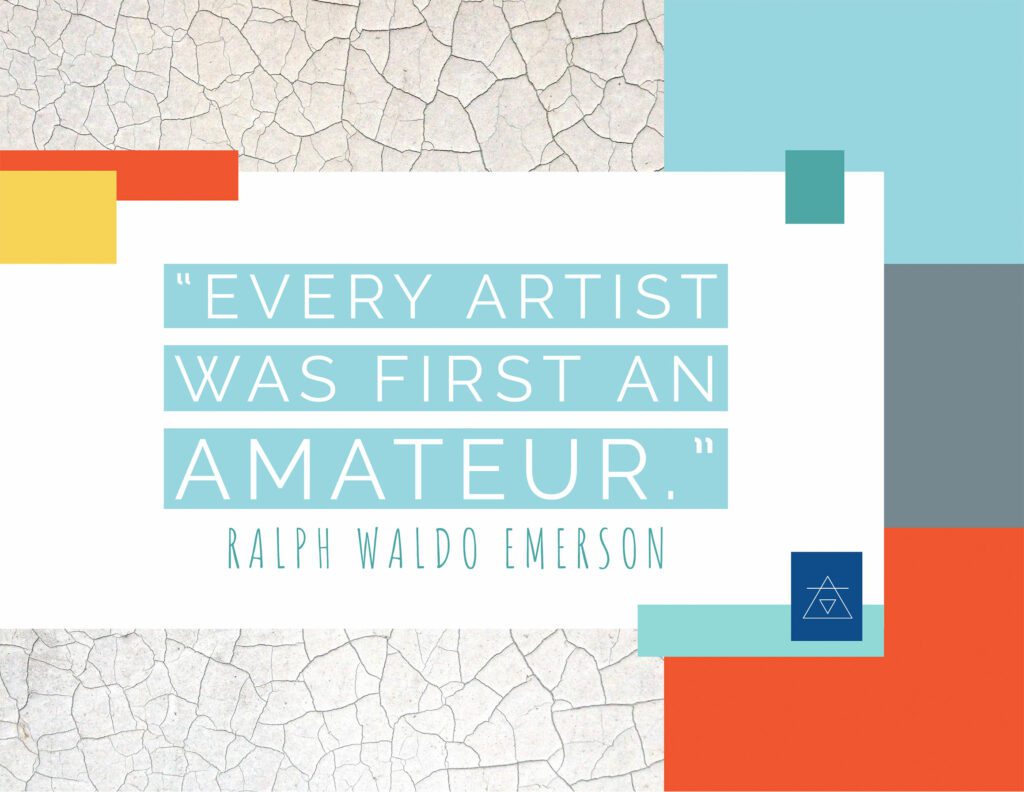
I’ll be honest, I love art history. For many art teachers, that may not be the norm, but teaching about the philosophy of art history and aesthetics can still be fun. My favorite part of discussing aesthetics is the realization that there is no right or wrong answer, there is only opinion. The real question is, how do you facilitate that discussion in a middle or high school art class, and how can you translate that into a project?
INTRODUCING AESTHETICS

It may shock you to hear that middle school art students and high school art students are capable of having a philosophical discussion. They may even get into it and stay engaged the entire class period. The key is pushing their definition of art and making them think of the things in a new way.
One of my favorite activities to do in my Intro to Art class is to spend a day discussing aesthetics, the philosophy of art and the age-old question, what is art? This is an art lesson my former coworker originally developed that I adapted over the years (you can get the entire lesson pack here). Students begin class by filling out their definitions of art. They must complete the sentence: Example A is art IF AND ONLY IF… I love when students write a definition they don’t realize is incredibly limiting, for example saying it must be a painting.
THE DISCUSSION
Once they complete their definitions, I show 16 works of art. I provide basic background information, such as what it’s made out of, and students check whether or not it is a work of art based on their definition. We then return to the 16 images and discuss them. Is a work of art by a famous artist, Marcel Duchamp, that is made out of factory-made objects, a stool and bicycle wheel, a work of art? Does the fact that it is on display at an art museum impact the definition? What about a factory-made bicycle? What about the original bicycle design before it was manufactured? It’s amazing how vested students get when you get into the nitty-gritty of what art is.
After the discussion I introduce 4 main theories of art:
- Mimetic: Art must be a realistic copy of the subject.
- Expressive: Art must reflect feelings and emotions.
- Formalist: Art must focus on formal aspects of art coming together to create something.
- Institutional: Someone in the “art world” must deem it a work of art.
These 4 theories are only 4. There are thousands, if not millions of varying ideas and opinions on what art is. I love the lightbulb moment when students realize their theory is as valid as a philosopher’s theory because art cannot be defined. My primary goal with this discussion is for students to walk away from it with an appreciation for art, the artist, and the creative process regardless of ability or status.

ADAPTING A PROJECT
How do you take this discussion of aesthetics and translate it into a project? You have to release control. I have two design-focused projects that allow students the freedom to explore their tastes. Both use free online programs and are quick projects. I love introducing these at the start of the semester to allow students to start honing in on their style from day one.

DESIGN COLLAGE
Using Adobe CC Express students start with a collage base, and build their own aesthetic into it. Before diving straight into the collage, they complete a research assignment to find inspiration and pull together images and colors into an inspiration reference. In addition, they have to come up with a quote, song lyric, or text as the anchor of their design.
Once they have their references pulled together students select a collage template on Adobe CC Express. From there, they must alter the collage enough to make it their own. They add their text, images, and colors to create a collage that aligns with their aesthetic. This is a quick and easy art project for middle school art or high school art students. I used this as the first project in my Introduction to Design course, but it’s appropriate for any art class. Check out the full lesson pack here.

VISION BOARD ASSIGNMENT
With this project, students dive a little deeper into their aesthetic by developing a 3-page vision board. Similar to the collage project, they must complete research to find inspiration and verbalize their aesthetic before diving in. Page one should have text and images that align with their style. The second page highlights colors and adjectives that reflect their style. Page three includes graphics and images that show their style. Check out the full lesson pack here.
Using aesthetic-based assignments early in the art course is a great way to help students gain confidence in talking about the philosophy art and their own taste in art. I often refer students back to these assignments if they need inspiration.
Thanks for stopping by and reading how I introduce aesthetics and the philosophy of art and encourage discussion in my art class. Just like definitions of art, there is no right or wrong way to teach art, as long as students are engaging in creating, expressing, and developing an appreciation for this amazing craft. Don’t forget to check out more blog posts here, subscribe for updates straight to your inbox, join me on Facebook, or see daily posts on Instagram and Tik Tok.

0 Comments